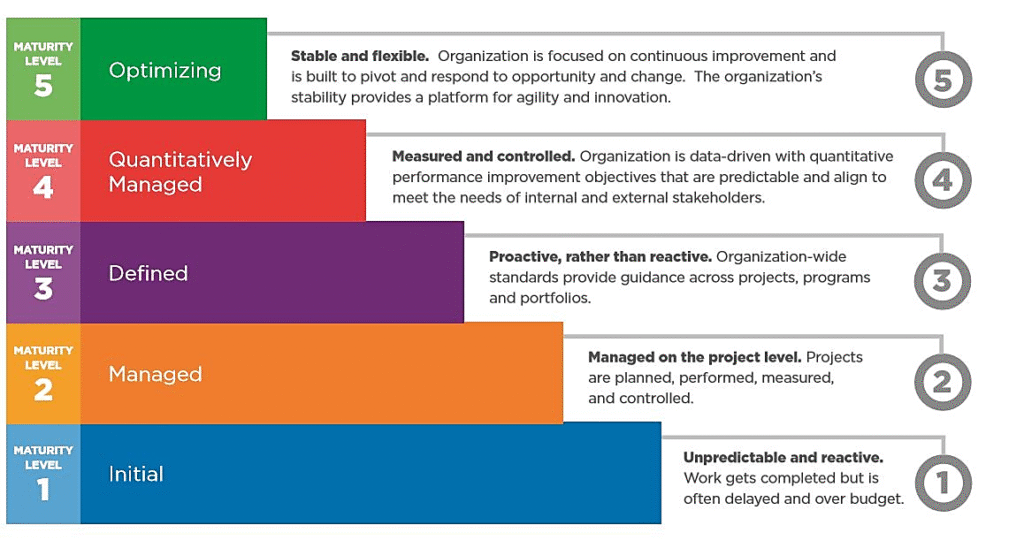
This document provides a concise overview of the “Implementation Plan – SOC-CMM” research blueprint, synthesizing key insights for establishing, maturing, and optimizing Security Operations Center (SOC) capabilities. It highlights the core framework, implementation lifecycle, and critical areas for optimization across people, processes, technology, performance, and compliance.
Blueprint Details
| Status: | Final Blueprint |
| Author: | Shahab Al Yamin Chawdhury |
| Organization: | Principal Architect & Consultant Group |
| Research Date: | March 22, 2025 |
| Location: | Dhaka, Bangladesh |
| Version: | 1.0 |
I. Introduction to the SOC Capability Maturity Model (SOC-CMM)
The Security Operations Center Capability Maturity Model (SOC-CMM) is a self-assessment tool designed to objectively measure the maturity and capability levels of SOCs. Developed from a Master’s thesis in 2016 using a Design Science Research approach, it has become a de facto standard for assessing SOC strengths and weaknesses globally.
The model assesses SOCs across 5 domains and 26 aspects:
- Business: Strategic and operational alignment with organizational goals.
- People: Staffing, roles, knowledge management, and training.
- Process: Operational procedures, workflows, and management.
- Technology: Tools and systems used by the SOC.
- Services: Specific security services offered by the SOC.
Maturity is evaluated on a 6-level scale (0-5), from “Non-existent” (ad-hoc or incomplete) to “Optimizing” (continuously improved). Capability, focusing on technical proficiency, is assessed on a 4-level scale (0-3), from “Incomplete” to “Defined”. SOC-CMM is a continuous maturity model, allowing individual elements to contribute to the overall score without rigid prerequisites.
II. SOC-CMM Implementation and Continuous Improvement Lifecycle
Implementing SOC-CMM is an iterative journey involving assessment, planning, and continuous adaptation.
- Assessment Methodology: Organizations can choose from:
- Self-Assessment: Internal evaluation of capabilities.
- Quick Scan: High-level assessment for initial validation or identifying major gaps.
- Full Assessment: Comprehensive evaluation including documentation review and interviews.
- Third-Party Audit: For objective insights and formal certification. The assessment begins with a profile sheet to define scope and context.
- Current State Analysis & Gap Analysis: The assessment identifies operational inefficiencies, skill gaps, and process weaknesses. Gaps are prioritized based on business risk, impact on certification, and interdependencies.
- Building the Improvement Backlog: Identified gaps are transformed into a structured backlog of initiatives (epics, features, tasks). This includes defining a SOC Target Operating Model (SOCTOM) with clear goals and a strategic horizon, requiring executive approval.
- Operationalizing the SOCTOM: The backlog is integrated into an iterative, agile continuous improvement process. This involves balancing resources for operations and improvements.
- Measuring and Adapting: Progress is continuously tracked through regular SOC-CMM assessments (full or quick scans) to verify results and adapt the improvement plan to evolving threats and business needs.
III. Key Areas for Optimization
A. People and Process Optimization
- People Management: Addresses staffing challenges (high requirements, lack of skilled personnel). Strategies include providing the right tools, continuous training, mentorship, and clear career paths.
- Knowledge Management: Crucial for a mature SOC, focusing on capturing, sharing, and utilizing critical data. Best practices involve making contributions simple and accessible within workflows.
- Training and Education: Continuous training and certifications are vital for an adaptable workforce, addressing the issue of insufficient training hours.
- Use Case Management & Detection Engineering: Essential for effective threat detection, including regular review and mapping to frameworks like MITRE ATT&CK. Focus on reducing false positives, which consume significant analyst effort.
- Security Incident Management: Emphasizes efficient response, measured by Mean Time To Detect (MTTD) and Mean Time To Respond (MTTR).
B. Technology and Platform Architecture
- Modern Security Tools: Includes SIEM/UEBA, NDR, EDR, SOAR, Threat Intelligence Platforms (TIP), and Vulnerability Management Systems (VMS). There’s a trend towards XDR for unified visibility and automated investigations.
- Platform Engineering: Focuses on scalability, integration, reliability, and capacity planning. Modern SOCs require AI-native architectures for speed and flexibility.
C. Performance Measurement and Quality Assurance
- Key Performance Indicators (KPIs): The SOC-CMM Metrics 101 provides a suite of 101 metrics across all domains, categorized by type ($, %, #, ≈, , , ✔). Metrics should align with organizational goals and provide actionable insights for continuous improvement.
- Quality Assurance & Reliability: Emphasizes “Quality over Quantity” and automating measurements. Validation of controls through exercises (red/purple teaming) and adherence to standards like ISO 27001 are crucial.
- Total Cost of Ownership (TCO) & Return on Investment (ROI): SOC-CMM aids in demonstrating ROI by quantifying avoided losses and benefits. TCO is indirectly managed through efficiency metrics and automation.
IV. Regulatory Compliance and Cybersecurity Framework Alignment
A mature SOC aligns with industry standards and regulatory frameworks:
- NIST Cybersecurity Framework (CSF): SOC-CMM provides explicit alignment with NIST CSF (1.1 & 2.0), which is widely adopted for risk-based security operations.
- ISO/IEC 27001 & COBIT: The SOC-CMM certification scheme is compatible with ISO 27001:2022 and ISO 9001:2015, and COBIT provides an integrated governance framework for information security.
- CMMI & CMMC: SOC-CMM is loosely based on CMMI, while CMMC is a DoD certification program built on CMMI and NIST.
- Data Privacy Regulations: Includes adherence to GDPR, HIPAA, and PCI DSS, which mandate strong security measures and accountability.
V. Conclusion
The SOC-CMM framework provides a robust, scientifically-backed blueprint for achieving and sustaining high-maturity SOCs. Success hinges on a holistic approach that prioritizes human capital, formalizes processes, leverages advanced technology, and is driven by data-informed decision-making. Continuous improvement and alignment with regulatory frameworks are paramount for building a resilient, proactive, and enterprise-grade security operation that delivers tangible business value.
Chat for Professional Consultancy Services
